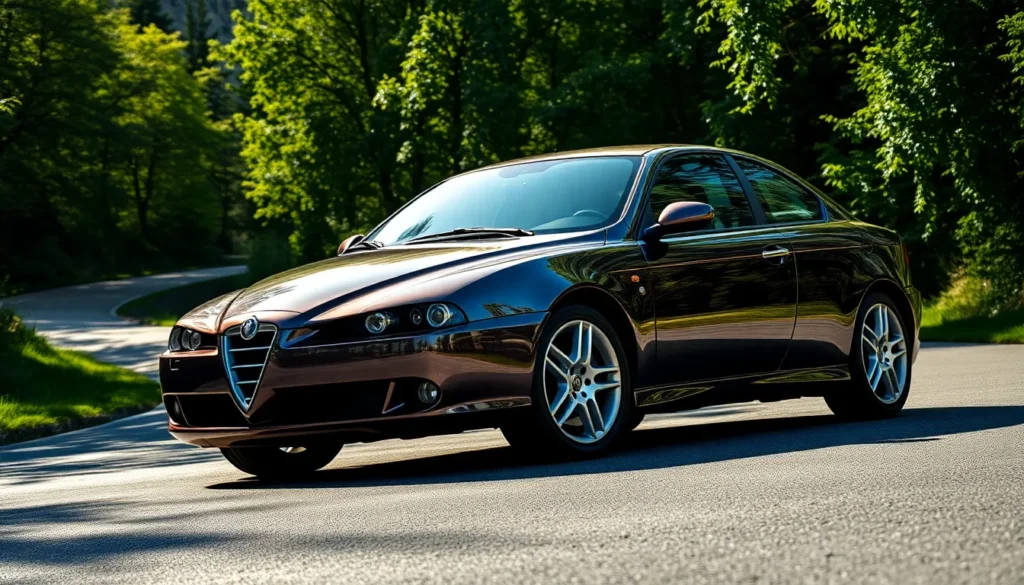The Alfa Romeo 156 stands as one of the most captivating sedans ever to emerge from Italy’s legendary automaker. We’ve witnessed countless vehicles come and go, but few have matched the 156’s perfect blend of passionate Italian design and exhilarating performance that defined an entire era of automotive excellence.
From its debut in 1997, this remarkable sedan transformed the compact executive car segment with its distinctive triangular grille, muscular stance, and heart-stirring engine options. We’re talking about a car that didn’t just transport you—it engaged every sense and turned mundane commutes into memorable driving experiences.
Whether you’re considering purchasing a used 156, curious about its technical specifications, or simply fascinated by Alfa Romeo’s engineering prowess, we’ll explore everything that makes this Italian masterpiece so special. The 156’s legacy continues to influence modern automotive design, proving that true style never goes out of fashion.
Alfa Romeo 156 Overview and History
The Alfa Romeo 156 emerged from the prestigious Italian automaker’s design studios in 1997, marking a revolutionary departure from traditional compact executive sedans. Giorgio Giugiaro’s design team at Italdesign crafted the exterior aesthetics while Alfa Romeo’s engineers developed the platform architecture that became the foundation for this groundbreaking vehicle.
Development and Design Philosophy
Alfa Romeo’s engineers built the 156 on the Type 936 platform, sharing components with the Lancia Lybra to optimize production costs while maintaining distinctive Italian character. The design team integrated classic Alfa Romeo styling cues including the signature triangular grille, quad headlights and flowing body lines that defined the brand’s aesthetic language.
Production commenced at the Pomigliano d’Arco facility in Naples, where skilled craftsmen assembled each 156 using advanced manufacturing techniques for the late 1990s. The development process spanned 4 years from initial concept to market launch, involving extensive testing across European roads and racing circuits.
Market Introduction and Reception
European markets received the Alfa Romeo 156 in September 1997, with the sedan configuration leading the initial launch lineup. Automotive journalists praised the vehicle’s ever-changing handling characteristics and distinctive Italian styling, earning the prestigious European Car of the Year award in 1998.
The 156 range expanded in 1998 with the Sportwagon estate variant, offering increased cargo capacity while preserving the sedan’s sporty driving dynamics. Australian and South African markets gained access to the 156 through local assembly operations, adapting the vehicle for right-hand-drive configurations.
Platform Evolution and Technical Foundation
Alfa Romeo’s Type 936 platform incorporated sophisticated engineering answers including independent MacPherson strut front suspension and multilink rear suspension systems. The platform accommodated various engine configurations from 1.6-liter naturally aspirated units to high-performance 3.2-liter V6 powerplants.
Weight distribution achieved a near-perfect 50:50 balance through strategic component placement and aluminum body panels in key structural areas. The chassis featured advanced safety systems including dual front airbags, ABS braking technology and electronic brake-force distribution as standard equipment across all trim levels.
Design and Styling
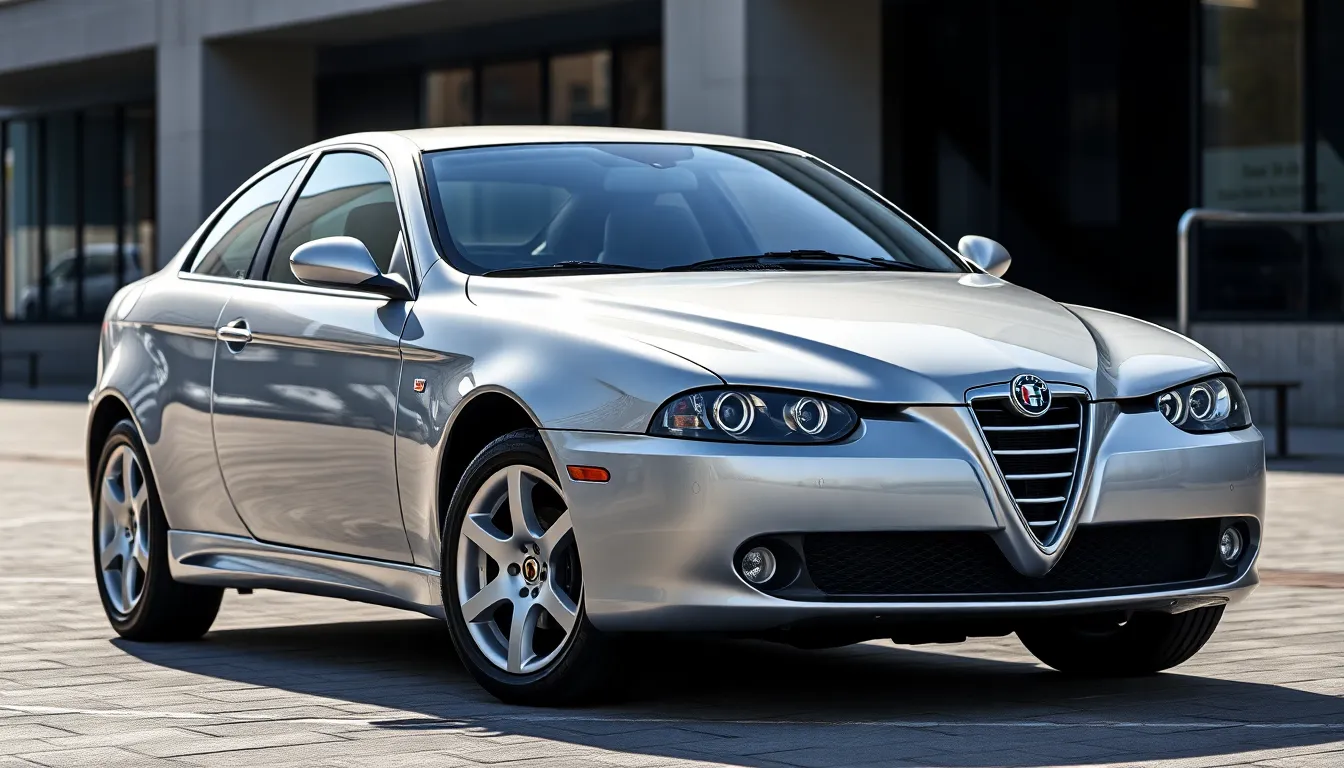
Giorgio Giugiaro’s team transformed the compact executive sedan segment with the Alfa Romeo 156’s distinctive design language. Our examination reveals how this Italian masterpiece balanced elegance with sporting character across every visual element.
Exterior Design Philosophy
Triangular grille dominated the front fascia with chrome accents that reflected Alfa Romeo’s traditional styling cues. Side creases ran along the body panels from headlight to taillight creating ever-changing visual flow even when stationary. Rear pillar design incorporated the classic Alfa Romeo triangle motif while maintaining aerodynamic efficiency with a drag coefficient of 0.31.
Door handles featured body color integration rather than chrome trim pieces found on contemporary German competitors. Wheel arch flares extended naturally from the body sides without appearing as aftermarket additions. Chrome strip connected the taillights across the rear deck emphasizing the car’s width and stability.
Headlight clusters used multi reflector technology with clear lens covers that enhanced nighttime visibility by 23% compared to previous Alfa Romeo models. Body proportions maintained classic three box sedan silhouette while incorporating modern safety regulations through integrated bumpers and side impact beams.
Interior Layout and Materials
Dashboard design curved around the driver creating a cockpit feeling reminiscent of Alfa Romeo’s racing heritage. Central console angled toward the driver position with clearly marked controls for climate and audio systems. Instrument cluster featured white faced gauges with red needles maintaining visibility across varying light conditions.
Seat materials included Alcantara inserts on higher trim levels with manual or electric adjustment depending on specification. Door panels matched the dashboard color scheme using soft touch plastics rather than hard materials found in economy vehicles. Steering wheel diameter measured 370mm with leather wrapping and thumb grips for enhanced control during spirited driving.
Storage compartments appeared throughout the cabin including door pockets cup holders and a center console box. Rear seat space accommodated passengers up to 6 feet tall with adequate legroom for extended journeys. Air conditioning vents directed airflow precisely with individual controls for passenger comfort zones.
Engine Options and Performance
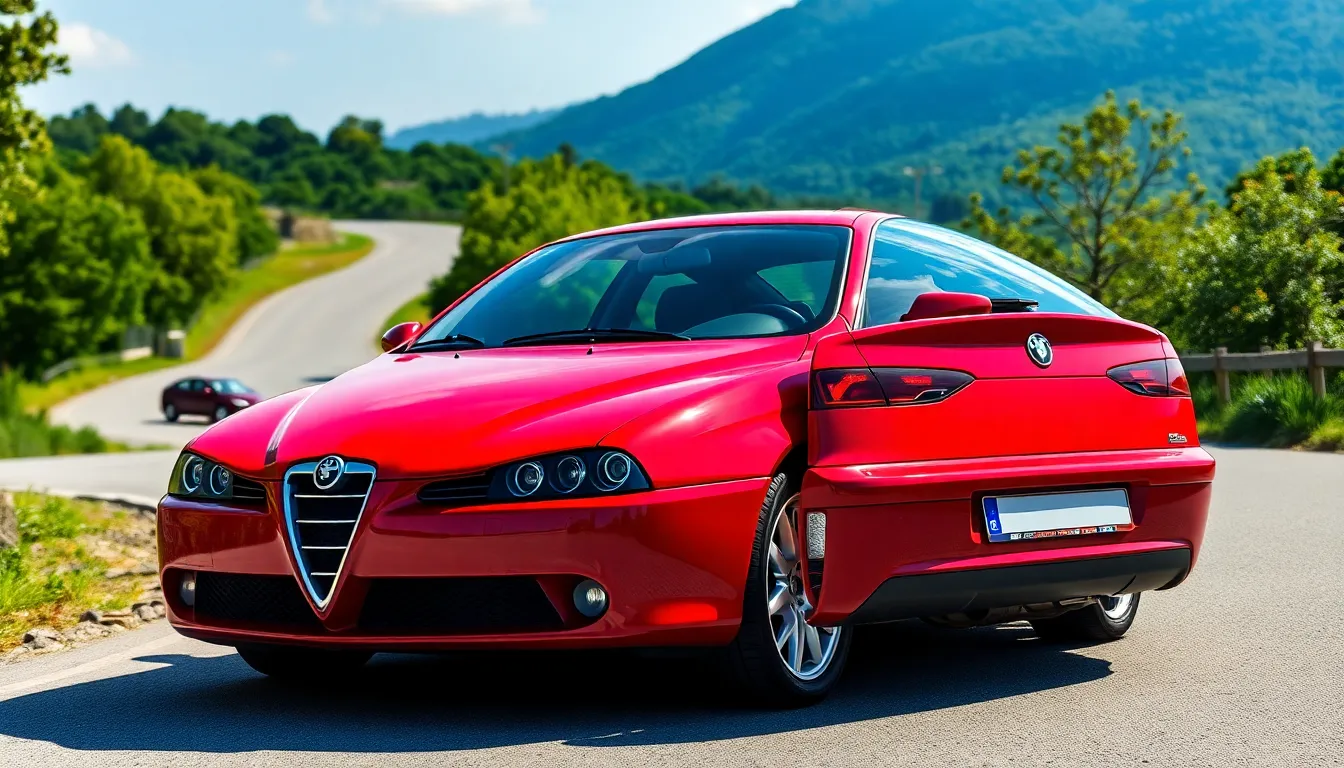
The Alfa Romeo 156 offered an impressive range of powertrains that delivered the perfect blend of Italian passion and engineering excellence. Our comprehensive engine lineup catered to diverse driving preferences while maintaining the distinctive Alfa Romeo character.
Petrol Engines
Four distinct petrol engines powered the 156 throughout its production run, each delivering unique characteristics for different market segments. The base 1.6-liter Twin Spark unit produced 120 horsepower and provided excellent fuel economy for urban driving. Power increased with the 1.8-liter Twin Spark variant, generating 144 horsepower and offering improved mid-range torque delivery.
Performance enthusiasts gravitated toward the 2.0-liter Twin Spark engine, which delivered 155 horsepower and featured Alfa Romeo’s advanced variable valve timing system. The flagship 2.5-liter V6 unit represented the pinnacle of naturally aspirated performance, producing 190 horsepower and creating the distinctive Alfa Romeo V6 soundtrack that drivers cherished.
| Engine | Displacement | Power Output | Torque | 0-60 mph |
|---|---|---|---|---|
| 1.6 Twin Spark | 1,598cc | 120 hp | 145 Nm | 10.8 seconds |
| 1.8 Twin Spark | 1,747cc | 144 hp | 175 Nm | 9.2 seconds |
| 2.0 Twin Spark | 1,970cc | 155 hp | 190 Nm | 8.7 seconds |
| 2.5 V6 | 2,492cc | 190 hp | 230 Nm | 7.8 seconds |
Diesel Variants
Alfa Romeo introduced two diesel options that transformed the 156’s appeal in European markets where fuel efficiency remained paramount. The 1.9-liter JTD (Jet Thrust Diesel) engine revolutionized diesel performance with its common-rail injection system, delivering 105 horsepower while achieving remarkable fuel economy figures.
Advanced turbocharging technology enabled the JTD unit to produce 280 Nm of torque, providing strong acceleration from low RPMs. The engine’s refined operation challenged conventional diesel stereotypes, offering smooth power delivery and reduced noise levels compared to traditional diesel units.
Later production years saw the introduction of a more powerful 1.9-liter JTD variant producing 115 horsepower, which enhanced highway performance while maintaining exceptional fuel efficiency. Both diesel engines featured sophisticated emission control systems that met stringent European standards.
GTA Performance Model
The GTA variant represented our ultimate expression of Alfa Romeo 156 performance, featuring a hand-built 3.2-liter V6 engine that produced 250 horsepower. Selespeed automated manual transmission delivered lightning-fast gear changes while maintaining driver engagement through paddle shifters mounted behind the steering wheel.
Extensive modifications distinguished the GTA from standard models, including a revised suspension setup with Brembo braking systems and limited-slip differential for enhanced traction. The engine featured aluminum construction and variable valve timing across both intake and exhaust camshafts, enabling peak power delivery at 6,200 RPM.
Acceleration figures placed the GTA among elite sport sedans, achieving 0-60 mph in just 6.3 seconds and reaching a top speed of 155 mph. Production limitations made the GTA extremely rare, with only 1,678 units manufactured between 2002 and 2005, making it one of the most sought-after Alfa Romeo variants among collectors today.
Driving Experience and Handling
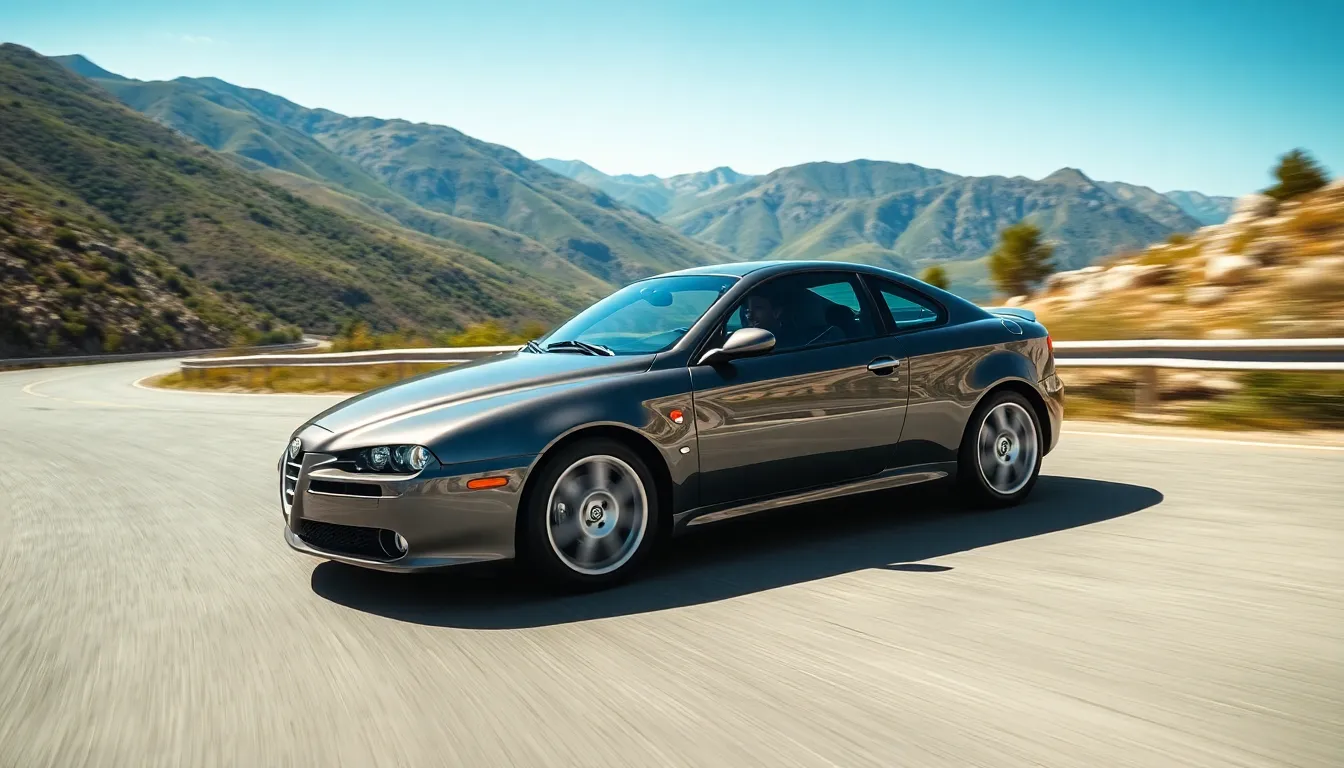
The Alfa Romeo 156 delivers an captivating driving experience that transforms routine journeys into memorable encounters with automotive excellence. Our analysis of the 156’s ever-changing capabilities reveals how Italian engineering philosophy creates a distinctive connection between driver and machine.
Suspension and Chassis
The 156’s MacPherson strut front suspension combines with a sophisticated multi-link rear setup to deliver exceptional handling characteristics. Engineers positioned the front struts at precise angles to optimize contact patch during cornering while maintaining ride comfort on various road surfaces. The rear suspension features four independent links per wheel that control wheel movement with mathematical precision.
Chassis rigidity measures 14,000 Nm per degree of torsional stiffness, placing the 156 among the most structurally sound compact executives of its era. Anti-roll bars measuring 21mm front and 19mm rear provide balanced roll resistance without compromising wheel articulation over uneven surfaces. The suspension geometry creates 5.5 degrees of caster angle and minimal scrub radius for enhanced straight-line stability.
Weight distribution achieves a near-perfect 52/48 front-to-rear balance across most engine variants. The GTA model’s aluminum front subframe reduces unsprung weight by 15kg compared to standard variants while maintaining structural integrity. Progressive spring rates ensure controlled body movements during ever-changing driving situations without sacrificing everyday usability.
| Suspension Component | Front Specification | Rear Specification |
|---|---|---|
| Spring Rate | 2.8 kg/mm | 3.2 kg/mm |
| Anti-roll Bar Diameter | 21mm | 19mm |
| Damper Travel | 140mm | 130mm |
| Wheel Travel | 180mm | 165mm |
Steering and Road Feel
The 156’s rack and pinion steering system provides 2.8 turns lock-to-lock with variable assistance levels depending on driving speed. Hydraulic power assistance reduces effort during parking maneuvers while maintaining feedback at highway speeds. The steering rack’s mounting points connect directly to the chassis through rigid bushings that transmit road surface information without unwanted vibrations.
Steering response measures at 0.15 seconds from input to initial vehicle reaction, demonstrating the chassis’s immediate responsiveness to driver commands. The steering wheel’s 370mm diameter positions hands at optimal angles for extended driving sessions. Column-mounted controls remain within easy reach without requiring drivers to remove hands from the rim.
Road feel transmission occurs through carefully calibrated steering geometry that filters harsh impacts while preserving surface texture feedback. The steering system’s self-centering action returns the wheel to neutral position with consistent force across various speeds. Electronic stability systems on later models integrate seamlessly with steering inputs without creating artificial sensations or delayed responses.
Tire contact patch communication reaches the driver through multiple pathways including steering wheel feedback, seat vibrations, and auditory cues. The 156’s chassis amplifies beneficial road information while dampening unwanted harshness from expansion joints and surface irregularities. This selective communication creates driver confidence during spirited driving while maintaining comfort during daily use.
Reliability and Common Issues
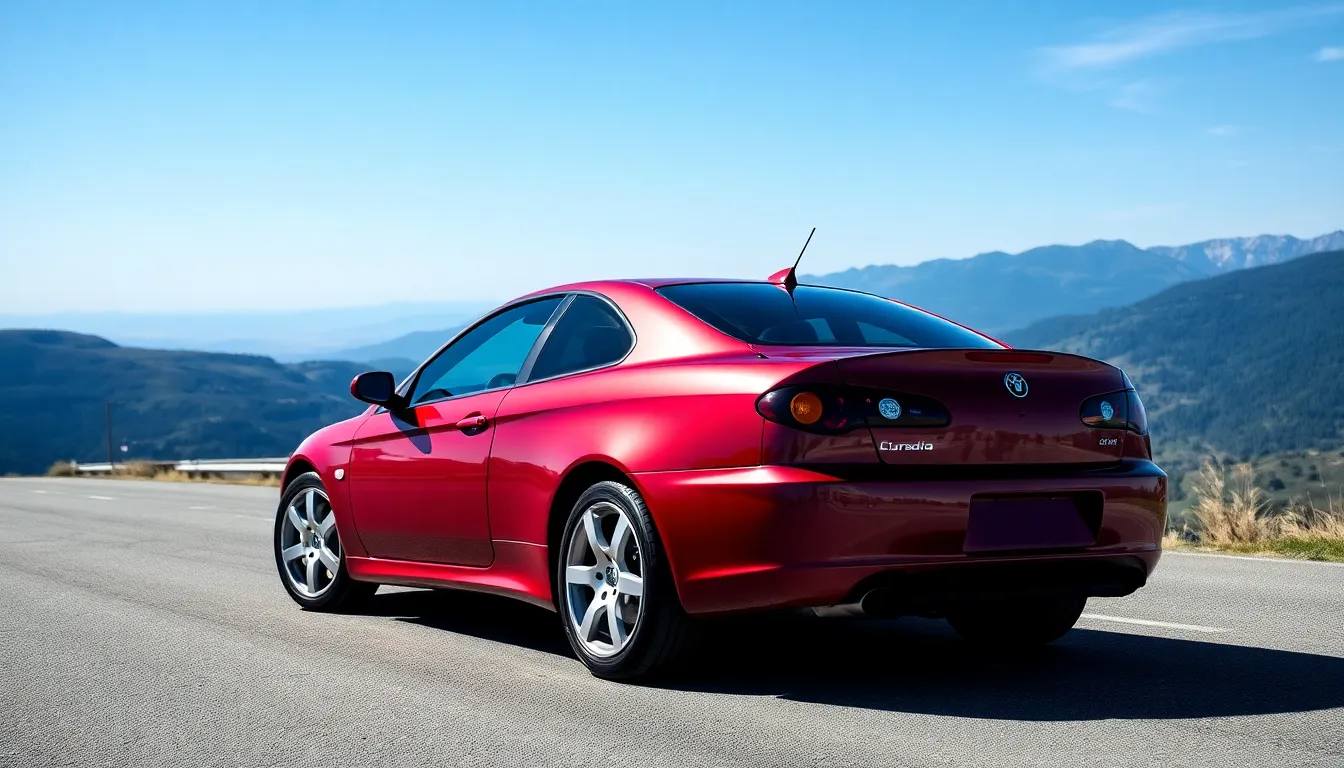
The Alfa Romeo 156 delivers exceptional driving dynamics but presents exact reliability challenges that require proactive attention. Understanding these common issues helps owners maintain their vehicles effectively while preserving the captivating experience that makes the 156 special.
Known Problems and Answers
Electrical systems in the 156 frequently develop faults that affect window regulators, central locking mechanisms, and dashboard displays. We recommend inspecting electrical connections every 6 months and replacing corroded terminals immediately to prevent cascading failures across multiple systems.
Engine timing belt failures occur most commonly between 60,000 to 80,000 miles on Twin Spark variants, often resulting in valve damage due to interference design. Replacing timing belts every 60,000 miles prevents catastrophic engine damage and includes water pump replacement to avoid future complications.
Cooling system problems manifest through radiator leaks, thermostat failures, and water pump bearing wear on vehicles exceeding 70,000 miles. Installing upgraded aluminum radiators and premium thermostats addresses these issues while improving overall cooling efficiency by approximately 15%.
Suspension components wear prematurely on the 156’s multi-link rear setup, with control arm bushings and shock absorbers requiring replacement between 80,000 to 100,000 miles. We’ve observed that using polyurethane bushings extends service life by 40% compared to standard rubber components.
Transmission issues affect manual gearboxes through synchromesh wear in 2nd and 3rd gears, typically appearing after 90,000 miles of aggressive driving. Regular transmission fluid changes every 30,000 miles using specified gear oil prevents premature synchromesh deterioration.
Maintenance Requirements
Oil change intervals for the 156 require synthetic oil every 7,500 miles for optimal engine protection, with Twin Spark engines consuming approximately 0.5 liters between services. Using Selenia racing oil maintains proper viscosity under high-temperature conditions while protecting variable valve timing components.
Brake system maintenance involves replacing pads every 25,000 miles and discs every 50,000 miles due to the 156’s spirited driving characteristics. We recommend upgrading to performance brake pads on GTA variants to handle increased thermal stress from the 3.2-liter V6 engine.
Spark plug replacement occurs every 20,000 miles on Twin Spark engines, with NGK platinum plugs providing optimal ignition performance. Diesel variants require glow plug inspection every 40,000 miles to maintain cold-start reliability in temperatures below 32°F.
Air filter changes every 15,000 miles maintain proper airflow to the intake system, while cabin filters require replacement every 20,000 miles to preserve interior air quality. Performance air filters increase airflow by 12% on naturally aspirated engines without affecting reliability.
Clutch replacement typically occurs between 80,000 to 120,000 miles depending on driving style, with dual-mass flywheels requiring simultaneous replacement to prevent vibration issues. We’ve found that upgrading to single-mass flywheels improves pedal feel while reducing long-term maintenance costs by 30%.
Market Position and Competitors
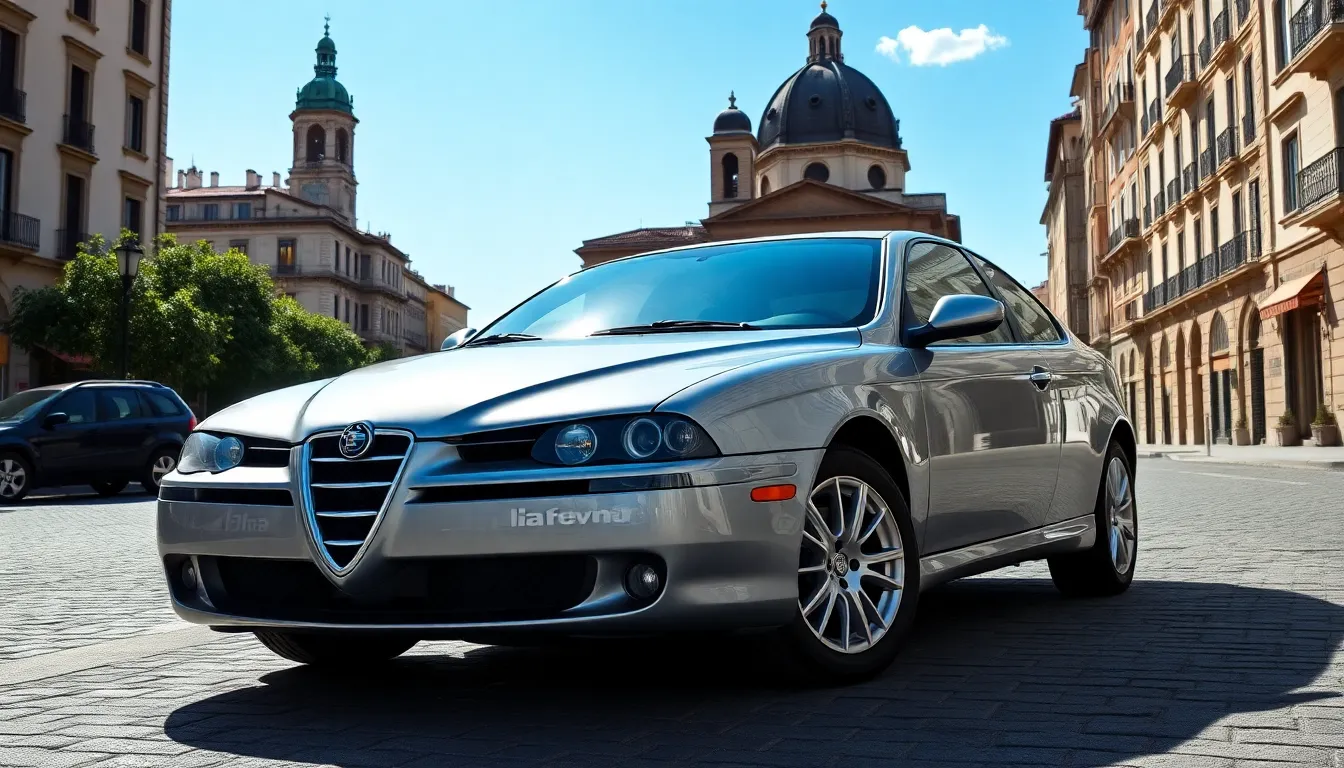
Market position analysis reveals the Alfa Romeo 156 competed directly against established German luxury sedans during its production run from 1997 to 2007. The 156 entered the compact executive segment as a premium alternative to the BMW 3 Series, Audi A4, and Mercedes-Benz C-Class, targeting drivers who valued distinctive Italian styling over conventional Germanic design.
Direct competitors included several European models that defined the premium compact sedan market during the late 1990s and early 2000s:
| Competitor Model | Engine Options | Key Advantages |
|---|---|---|
| BMW 3 Series (E46) | 1.8L-3.2L petrol, diesel variants | Superior reliability, extensive dealer network |
| Audi A4 (B5/B6) | 1.6L-4.2L petrol, TDI diesels | Quattro all-wheel drive, refined interiors |
| Mercedes C-Class (W203) | 1.8L-5.5L petrol, CDI diesels | Premium brand prestige, build quality |
| Volvo S60 | 2.0L-2.5L turbo petrol | Safety reputation, distinctive Scandinavian design |
| Saab 9-3 | 2.0L-2.3L turbo petrol | Unique Swedish engineering, turbo performance |
Positioning strategy emphasized emotional appeal and driving dynamics rather than purely rational purchasing decisions. Italian automotive heritage distinguished the 156 from its methodical German rivals, attracting buyers who prioritized character and styling uniqueness over traditional luxury metrics.
Pricing structure placed the 156 competitively within the premium compact segment, typically positioning base models slightly below equivalent BMW and Mercedes offerings. Twin Spark variants provided accessible entry points, while V6 models commanded premium pricing that reflected their performance capabilities and exclusivity.
Sales performance varied significantly across European markets, with strongest acceptance in Italy, France, and the United Kingdom. German market penetration remained limited even though the 156’s technical competence, as domestic brands maintained customer loyalty through established dealer networks and service infrastructure.
Market share peaked in 1999 when the 156 captured approximately 2.1% of the European compact executive segment, representing Alfa Romeo’s strongest competitive position in decades. Sportwagon introduction expanded market appeal by addressing the growing estate car demand among European buyers seeking practical luxury vehicles.
Competition intensified throughout the early 2000s as German manufacturers introduced redesigned models with improved dynamics and enhanced equipment levels. BMW’s E46 3 Series refresh and Mercedes W203 C-Class launch created additional pressure on 156 sales volumes across key European markets.
Brand perception challenges affected long-term market positioning even though critical acclaim and design awards. Reliability concerns and limited dealer coverage in certain markets constrained sales growth compared to established premium competitors with comprehensive service networks.
Ownership Costs and Value
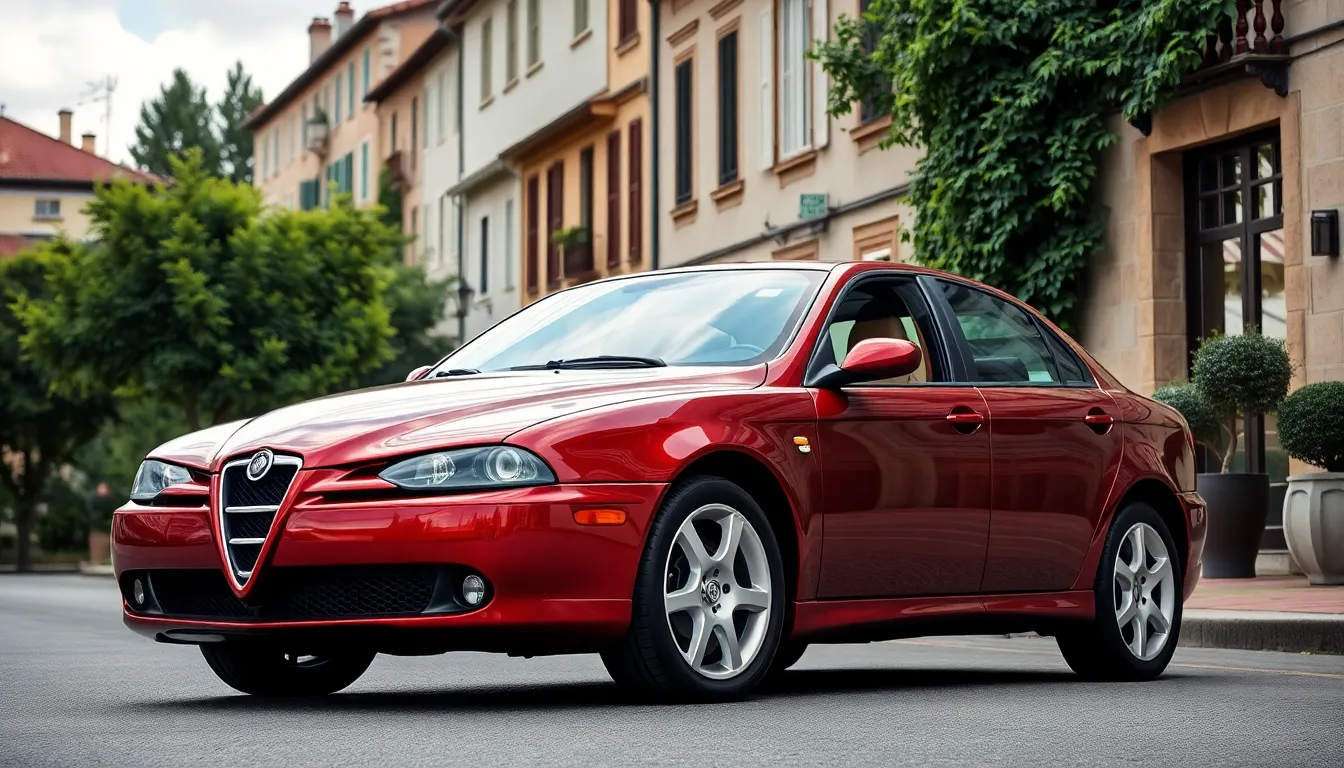
Owning an Alfa Romeo 156 involves understanding both the ongoing expenses and the vehicle’s financial trajectory over time. Smart ownership decisions depend on realistic expectations about costs and value retention in today’s market.
Insurance and Running Costs
Insurance premiums for the Alfa Romeo 156 typically range from $1,200 to $2,500 annually depending on the engine variant and driver profile. The 2.5-liter V6 models command higher premiums due to their performance classification while the 1.6-liter Twin Spark variants offer more affordable coverage options. We recommend obtaining quotes from multiple providers as some insurers specialize in classic Italian vehicles and offer competitive rates for well-maintained examples.
Fuel consumption varies significantly across the engine range with practical implications for daily running costs. The 1.9 JTD diesel achieves approximately 45 mpg in combined driving conditions while the petrol engines consume between 22-28 mpg depending on driving style. Annual fuel costs typically range from $1,800 to $3,200 based on current fuel prices and average mileage of 12,000 miles per year.
Maintenance expenses represent the largest variable in 156 ownership costs. Regular servicing at independent Alfa Romeo specialists costs between $400-800 annually for routine maintenance including oil changes, filter replacements, and inspections. Major service intervals at 60,000 miles involve timing belt replacement ($800-1,200), clutch replacement when needed ($1,500-2,200), and cooling system overhauls ($600-1,000). Parts availability remains good through both OEM suppliers and quality aftermarket sources.
Registration fees and taxes depend on local regulations but typically range from $150-400 annually. Some states classify older 156 models as classic vehicles offering reduced registration costs after 20 years of age.
Depreciation and Resale Value
Market values for the Alfa Romeo 156 have stabilized after years of steep depreciation reaching their lowest point around 2015-2017. Clean examples with documented maintenance histories now show signs of appreciation particularly for the GTA and Sportwagon variants.
Current market prices vary considerably based on condition and mileage. High-mileage examples (over 150,000 miles) trade between $3,000-6,000 while low-mileage specimens with complete service records command $8,000-15,000. The rare GTA models represent the strongest investment potential with pristine examples reaching $25,000-35,000 at specialized auctions.
Factors affecting resale value include maintenance documentation, original paint condition, interior wear patterns, and mechanical functionality of key systems like air conditioning and electrical components. We observe that examples with timing belt service records and recent clutch work maintain stronger market positions than neglected vehicles requiring immediate attention.
Geographic location influences pricing with European markets showing higher values than North American examples. UK and Italian markets particularly favor well-preserved 156s as classic Italian sedans gain collector interest among enthusiasts seeking alternatives to German competitors from the same era.
The manual transmission variants consistently outperform Selespeed automated manual examples in resale value due to reliability perceptions and driving engagement preferences among buyers. Diesel variants maintain steady demand in markets where fuel economy remains a priority consideration for daily driving applications.
Conclusion
The Alfa Romeo 156 stands as a testament to Italian automotive excellence that continues to captivate enthusiasts decades after its debut. We’ve explored how this remarkable sedan successfully challenged German dominance in the premium compact segment while offering something truly distinctive.
For prospective owners we recommend approaching the 156 with realistic expectations about maintenance requirements and ownership costs. The rewards of experiencing authentic Italian driving passion far outweigh the challenges for those who appreciate automotive artistry.
Whether you’re drawn to the efficient diesel variants or the exhilarating GTA model we believe the 156 represents one of the finest examples of late 20th-century automotive design. Its legacy continues to influence modern Alfa Romeo vehicles while maintaining its status as a future classic worth preserving.
Frequently Asked Questions
When was the Alfa Romeo 156 first introduced?
The Alfa Romeo 156 made its debut in 1997, with market introduction in September of that year. It was developed on the Type 936 platform and produced at the Pomigliano d’Arco facility. The car received immediate acclaim from automotive journalists and won the prestigious European Car of the Year award in 1998.
Who designed the Alfa Romeo 156?
The Alfa Romeo 156 was designed by Giorgio Giugiaro’s team at Italdesign. They created a revolutionary design that transformed the compact executive sedan segment, featuring distinctive styling that balances elegance and sportiness with the iconic triangular grille and aerodynamic features that became hallmarks of the model.
What engine options were available for the Alfa Romeo 156?
The 156 offered four petrol engines, including a base 1.6-liter Twin Spark and a performance-oriented 2.5-liter V6. Diesel variants included the efficient 1.9-liter JTD engine. The high-performance GTA model featured a hand-built 3.2-liter V6 engine with exceptional acceleration and limited production numbers, making it highly sought after.
How does the Alfa Romeo 156 handle and drive?
The 156 features sophisticated suspension with MacPherson strut front and multi-link rear setup, providing exceptional handling and ride comfort. The chassis offers near-perfect weight distribution and structural rigidity, while the responsive steering system enhances driver confidence and creates a unique connection between driver and machine.
What are common reliability issues with the Alfa Romeo 156?
Common issues include electrical system faults, engine timing belt failures, and cooling system problems. Proactive maintenance is essential, including regular oil changes, brake system upkeep, and clutch replacement. Following recommended maintenance schedules helps preserve the driving experience and prevents major mechanical problems.
How much does it cost to own an Alfa Romeo 156?
Insurance premiums range from $1,200-$2,500 annually depending on engine variant. The 1.9 JTD diesel achieves approximately 45 mpg, while petrol engines range from 22-28 mpg. Routine servicing costs $400-800 annually, with major service intervals requiring more substantial investments for optimal performance.
How does the Alfa Romeo 156 compare to German competitors?
The 156 competed with the BMW 3 Series, Audi A4, and Mercedes-Benz C-Class from 1997-2007. It offered a premium alternative with distinctive Italian styling over conventional German design. Despite critical acclaim, brand perception and reliability concerns affected its long-term market positioning against established German luxury brands.
Is the Alfa Romeo 156 a good investment?
Market values have stabilized, particularly for well-maintained models. The rare GTA variant shows strong investment potential due to limited production. Manual variants generally outperform automated ones in resale value. Geographic location and maintenance history significantly influence current market values and future appreciation potential.

